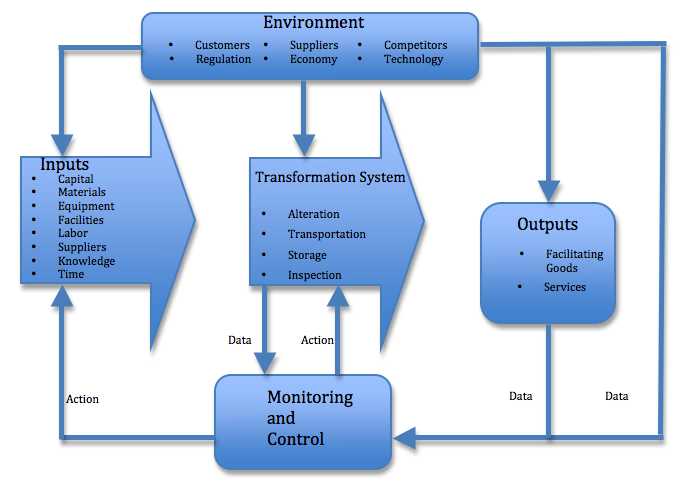The word system is derived from the Greek word “system” which means a organized relationship among the following unit or component. “A system is an orderly grouping of interdependent components linked together according to a plan to achieve a specific goal”.
The word component may refer to physical parts (engine, wheels of cars), management steps (planning, organizing, controlling) or a sub subsystem in a multi level structure. It is to be noted that a system is not a randomly arranged set. It is arranged with some logic governed by rules, regulation, principles and policies.
In MIS we are usually concerned with man-made system involving input, process and output, as represented in figure. A system may have multiple inputs and multiple outputs.
All systems operate in an environment. The environment may influence the system in its design and performance. When a system is designed to achieve certain objective, it automatically sets the boundaries for itself. The understanding of boundaries of the system is essential to bring clarity in explaining the system components and their arrangement.

A typical system
Characteristics of System :
Following characteristics are present in all systems :
a) Organization
b) Interaction
c) Interdependence
d) Integration
e) Central Objective
Organization : Organization implies structure and order. It is the arrangement of components that helps to achieve objectives. Hierarchical relationship starting with the president on top and leading down ward to the blue collar worker represent the organization structure
Interaction : Interaction refers to the procedure in which each component interact with other components of the system. In an organization, for example purchasing must interact with product, advertising with sales and payroll with personnel.
Interdependence : Independence is concerned with how a system is tied together; it is more than sharing a physical part or location. It means that parts of the system part or location with in the system, even through each part performance. A unique function successful integration will typically produce a better request as whole rather than if each component works independently.
Central Objective : Objective may be real or stated. Objective is determined by higher management and user must be aware about the central objective well in advance.
 Dinesh Thakur holds an B.C.A, MCDBA, MCSD certifications. Dinesh authors the hugely popular
Dinesh Thakur holds an B.C.A, MCDBA, MCSD certifications. Dinesh authors the hugely popular